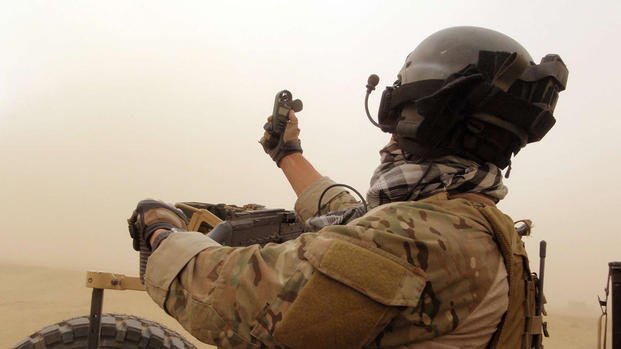The Air Force officially has its first enlisted woman attempting the special operations weather career field.
The female airman, unidentified for privacy reasons, recently graduated basic military training and the special warfare prep course but has yet to begin assessment and selection, known as A&S, Air Education and Training Command spokeswoman Marilyn Holliday told Military.com on Thursday.
Additionally, the next female airman to attempt battlefield training for the Tactical Air Control Party career field officially began AETC's special warfare prep course on March 18, Holliday said.
The two women mark the eighth and ninth enlisted women to try any kind of battlefield training in the Air Force since the Defense Department opened combat career fields to all in December 2015.
The breakdown: AETC has had seven women pursue TACP training, one try for pararescue training, and now one attempt special operations weather, Holliday said. The command does not track recruits who are interested in the special warfare career fields until "they've officially entered the technical training portion," she said.
Officials said in January the airman who entered the pararescue (PJ) training pipeline was injured during the first week of training and had to drop out. While the woman is expected to come back at a later date, Holliday on Thursday said she hasn't returned. She has been the first candidate to seek out PJ training.
Related content:
- Air Force May Have Its First Female Battlefield Airman This Spring
- SpecOps Recruiting Squadron Helps Air Force Combat 'Runaway Attrition'
- 6th Woman in Battlefield Airman Training Drops Out
Last month, the Air Force's deputy chief of staff for manpower, personnel and services revealed another female airman would attempt TACP training.
Lt. Gen. Brian Kelly, in written testimony before the Senate Armed Services subcommittee on personnel, said the service was hopeful the candidate makes it through, but added that attrition in these career field pipelines has been high because of the grueling training.
Attrition across the elite training pipelines ranges between 40 and 90 percent, depending on specialty, Kelly said.
"Consequently, we do not foresee large numbers of females in operational units in the near term," he said.
-- Oriana Pawlyk can be reached at oriana.pawlyk@military.com. Follow her on Twitter at @oriana0214.












